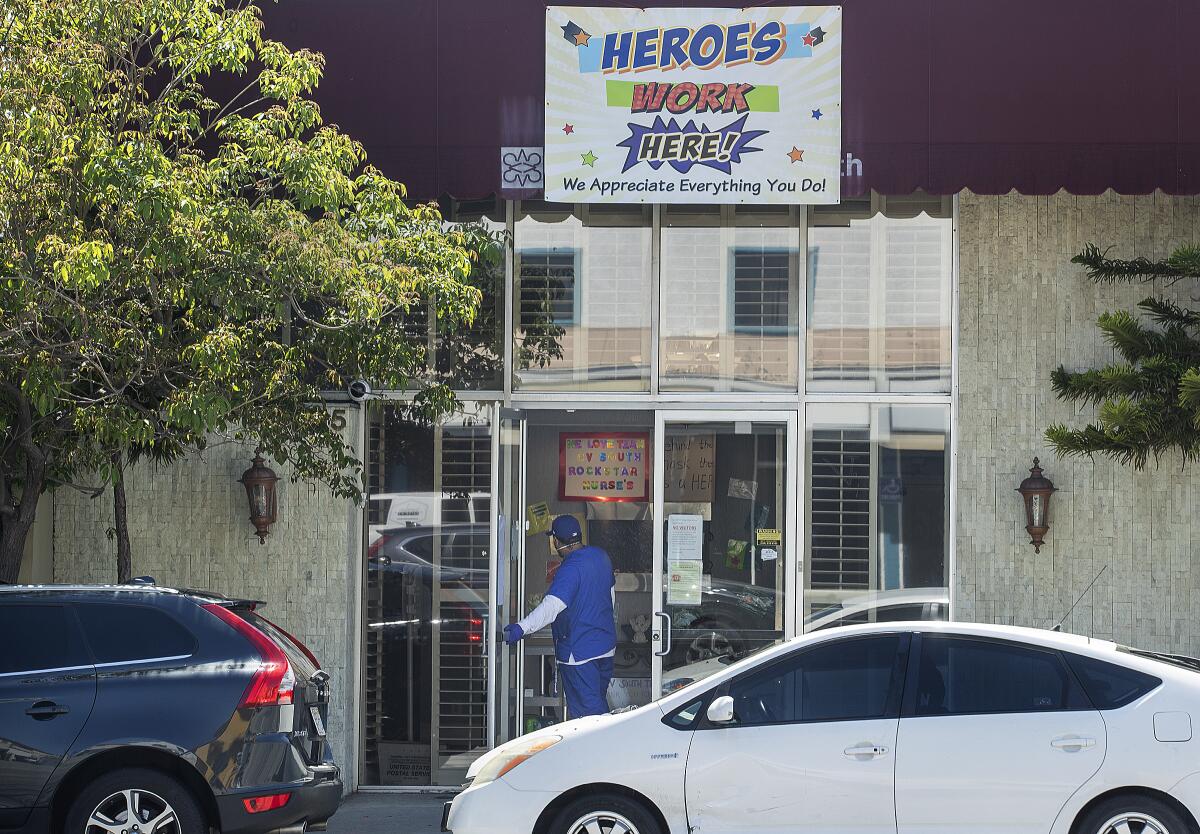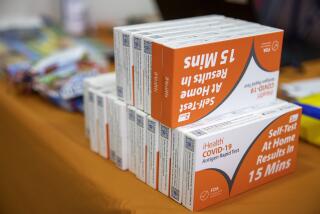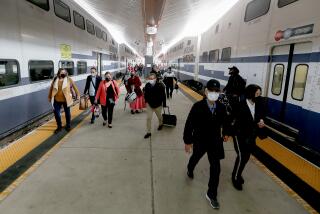As coronavirus deaths mount, L.A. County is far behind on promise to test everyone in nursing homes

- Share via
A month after vowing to test all nursing home residents and staff for the novel coronavirus, Los Angeles County health officials have completed the effort in only about a third of homes and have dramatically scaled back testing plans.
The abrupt change — which calls for testing only a small sample of residents in nursing homes that have not had an outbreak — is outlined in a letter county health officials sent to nursing homes last week, as the death toll continued to mount at facilities across the county.
Health officials defended the decision as the most efficient way to get a quick handle on what is happening in the homes. But some experts fear the move could allow the virus to continue to spread undetected, resulting in more fatalities among a vulnerable population that is already the hardest hit by the pandemic.
The COVID-19 death toll at county residential facilities topped 1,000 this week, with the vast majority at nursing homes.
“More people will die than necessary based on this policy,” said Dr. Michael Wasserman, president of the California Assn. of Long Term Care Medicine, which represents doctors, nurses and others working in long-term care facilities.
Since the start of the pandemic, most nursing homes have been testing only residents and staff who show symptoms. But in late April, as the COVID-19 death toll approached 300 in L.A. County facilities, health officials announced their aggressive new plan to test everyone in an effort to turn the grim tide.
The point of testing everyone is to catch people who are infected but show no symptoms — including employees who work at multiple nursing homes and could spread the disease from facility to facility.
But as of Monday, county officials had managed to test everyone at only 141 skilled nursing facilities, health officials acknowledged. That’s about a third of the nearly 400 facilities in the county.
All of the facilities where everyone has been tested have had outbreaks, according to county officials.
Facilities with no known cases of COVID-19 have been instructed to test 10% of residents every week, in the hope that will be sufficient to catch and control an outbreak before it gets out of hand.
“I think this was a wise move. It really was meant to allow us to do as much as possible as quickly as possible,” county health director Barbara Ferrer said at her daily briefing Thursday. She added that everybody would be tested at any nursing home if a case turned up in the sample.
Ferrer promised the first round of universal testing would be complete at homes with known outbreaks by next week.
Wasserman, who is also medical director at a nursing home in Reseda, said the new approach doesn’t make sense.
“Let’s say you have 100 people in a facility and you test everyone and find that five are positive. Well, you can do something about that,” Wasserman said. Residents would get quarantined, and employees would get sent home or assigned to work only with residents who have also tested positive.
But if you test only a small sample of residents and don’t bother to test staff, you are bound to miss positive cases, Wasserman said. Staff members with the virus will “keep coming to work and you are going to have a big outbreak on your hands,” Wasserman said.
Charlene Harrington, a professor emeritus at UC San Francisco’s School of Nursing who has studied nursing homes since the 1980s, said: “It is not good just to test those where there is an outbreak because it is too late by then — the virus will have spread throughout the facility.”
The county “needs to mandate testing twice a week in all homes that don’t have the outbreak, too, in order to isolate the employees and residents before it spreads.”
It’s not clear why the county changed its approach. Experts say fear of bad publicity and the cost of the tests could have been factors.
The first round of testing all staff and residents is being conducted by the county at no cost to the nursing homes, according to the letter. The facilities were advised to contract with commercial laboratories for ongoing testing — presumably at the nursing home’s expense.
That’s a concern for facility owners. Tests cost about $150 each, according to a recent estimate by American Health Care Assn., which represents nursing homes. It would cost $36 million to test more than 240,000 nursing home residents and staff in California, the group said.
Dr. Manuel Eskildsen, who teaches in the Division of Geriatrics at UCLA and works as a clinician for a network of nursing homes, said there has been noticeable progress in testing even in the last week.
Nursing home operators were initially concerned about the stigma of discovering a COVID-19 case and winding up on the county’s list of outbreaks. A single, asymptomatic case could get a home branded as a COVI-19 facility, which upset family members and made employees anxious.
It also hurt business.
“I have one facility in mind that had a really tough time with referrals after they turned up four or five positives,” Eskildsen said.
That’s actually “a triumph,” Eskildsen said, because it allowed the home to isolate the cases and control what could have been a huge outbreak without the testing. “But they still had that whiff about them,” Eskildsen said, referring to potential negative publicity.
The hesitance of nursing home operators to perform testing, and of public health officials to demand it, has left advocates for the elderly pleading for swifter action.
“It’s disgraceful that the county would take a step backward on testing at a time when dozens of nursing home residents are dying from the coronavirus almost every day,” said Michael Connors, a spokesman for California Advocates for Nursing Home Reform. “Without universal testing, the virus will continue to rage through nursing facilities and kill many more residents.”
More to Read
Sign up for Essential California
The most important California stories and recommendations in your inbox every morning.
You may occasionally receive promotional content from the Los Angeles Times.














